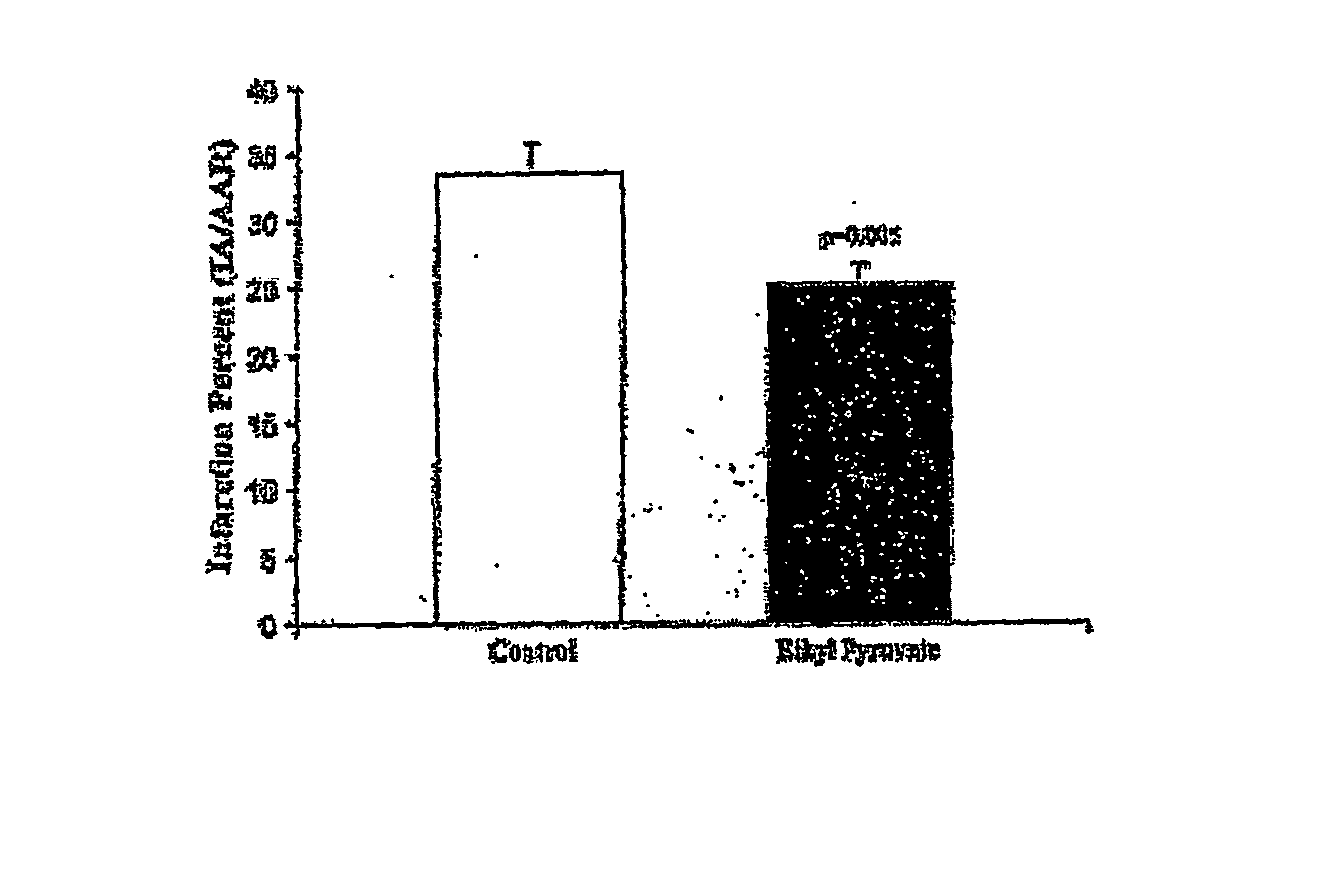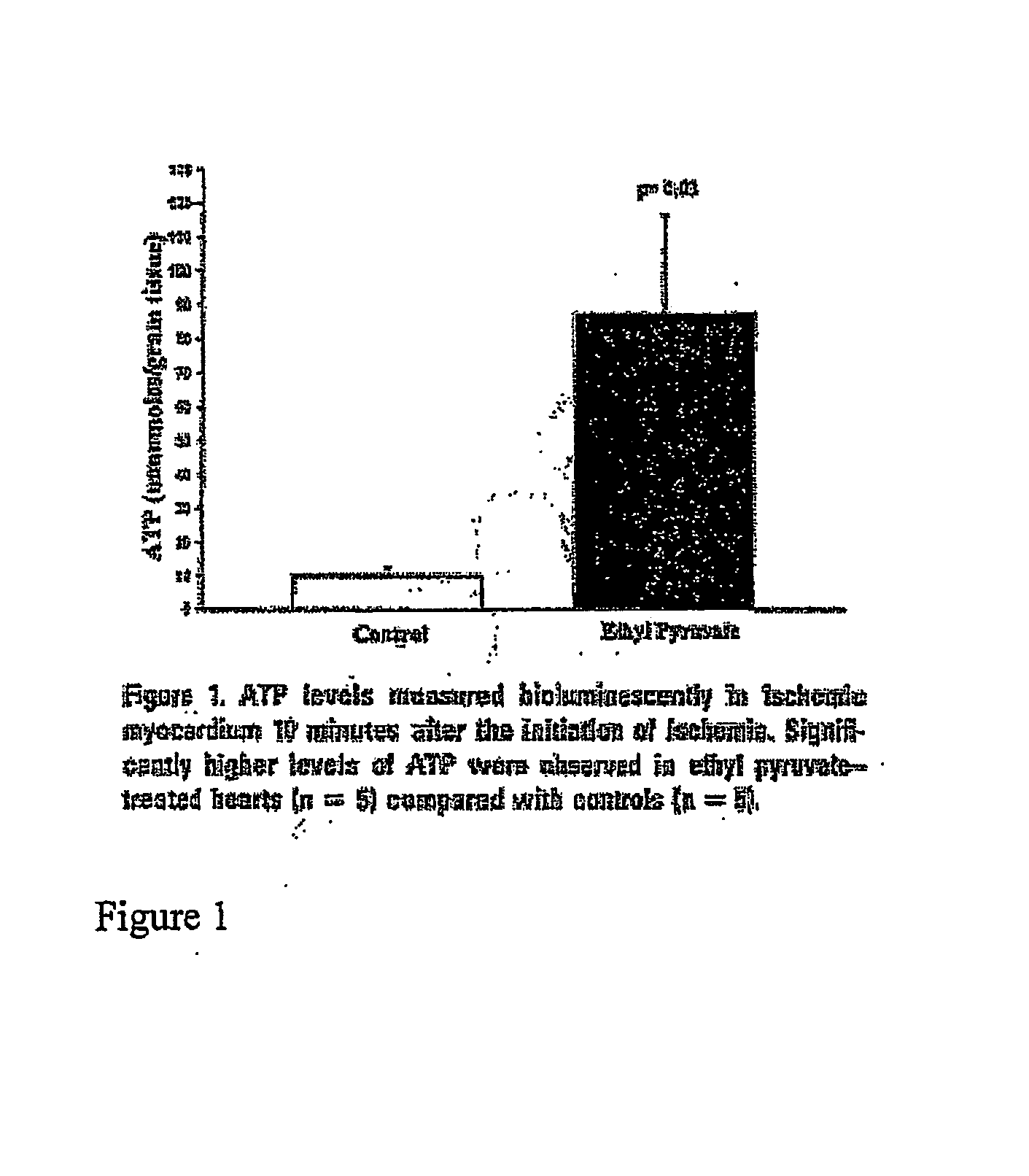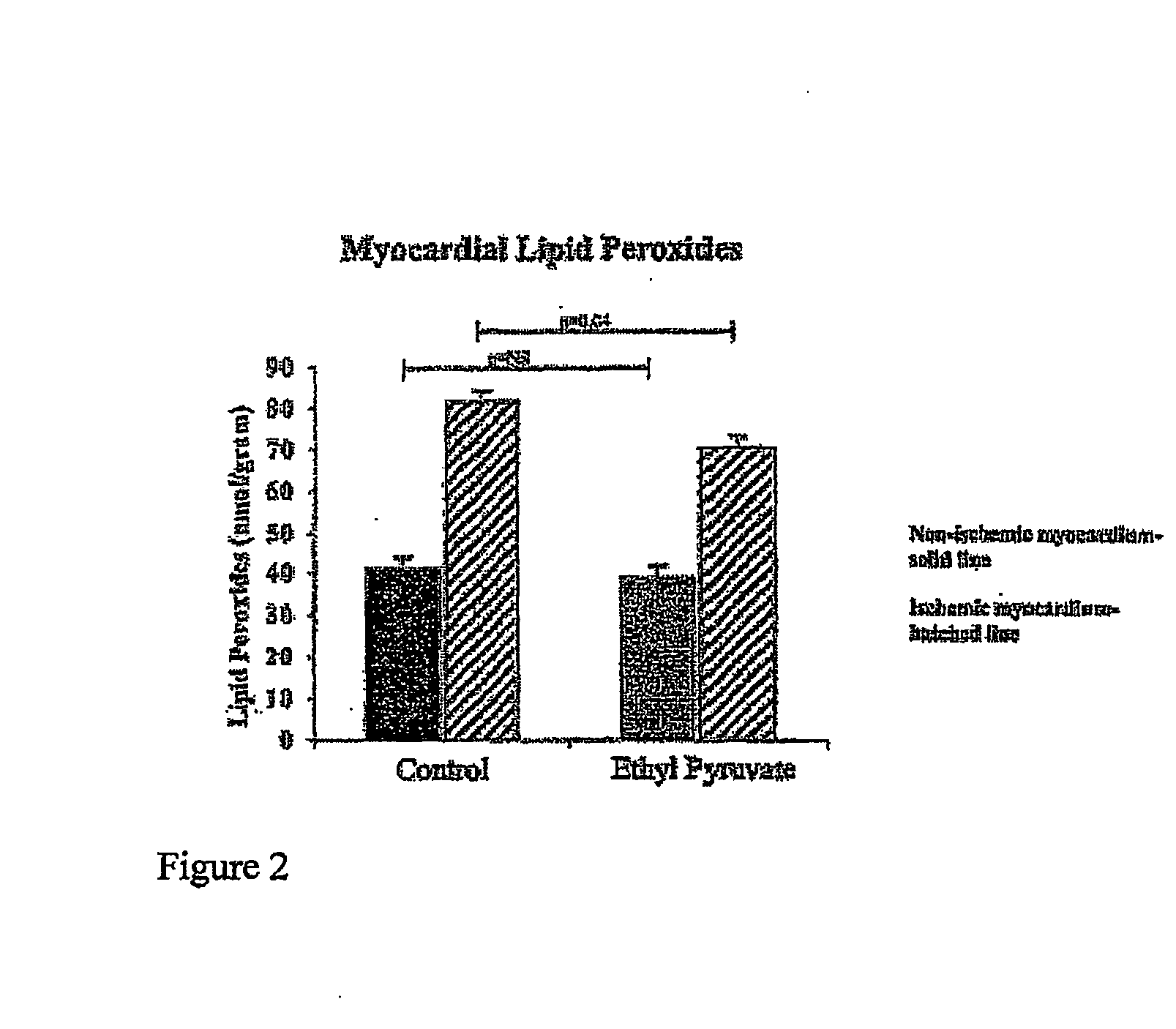Cytoprotective Effects of Ethyl Pyruvate
a technology of alpha-ketoalkanoic acid and ethyl pyruvate, which is applied in the direction of antibody medical ingredients, skeletal/connective tissue cells, drug compositions, etc., can solve the problems of myocardium at risk of contractile dysfunction and injury, poor energy requirements of anaerobic glycolysis, etc., to prevent or reduce stroke-related injury, treat, suppress or reduce the incidence of stroke-related injury, and prevent or reduce strok
- Summary
- Abstract
- Description
- Claims
- Application Information
AI Technical Summary
Benefits of technology
Problems solved by technology
Method used
Image
Examples
example 1
Ethyl Pyruvate Increases ATP Production in Ischemic Myocardium
[0107] To determine ethyl pyruvate effects on myocardial high-energy phosphate levels, free radical injury, myocardial infarction, and cardiac mechanics, a model of myocardial ischemia-reperfusion injury was used. Though the proportionate degree of myocardial injury induced in the model is more pronounced than what occurs in a typical cardiac surgical procedure, the model was selected for its predictability and functionality.
[0108] In the control group, Ringer's solution was utilized to preclude any attribution of observed differences to electrolyte composition of solutions. Also, in the unlikely event that some acid-base buffering capacity of ethyl pyruvate was the only cause of observed differences, a small pilot series of control animals with lactated Ringer's solution was performed. These animals would have obtained any buffering benefit, yet myocardial function and infarct size were equivalent to Ringer's solution ...
example 2
Ethyl Pyruvate Treatment Diminishes Myocardial Lipid Peroxidation
[0112] Two experiments were conducted to determine myocardial lipid peroxidation, which is a measure of oxidative stress. Spectrophotometric quantification of lipid peroxides in myocardium exposed to ischemia and reperfiusion, and in nonischemic myocardium, which served as an internal, control, is represented in FIGS. 2 (n=6 mice per group) and 3 (n=5 mice per group). Lipid peroxide levels in the nonischemic myocardium did not differ significantly between animals treated with ethyl pyruvate (42.3±4.8 nmol / g; n=6) and the control, Ringer's solution (37.5±5.1 nmol / g; n=6), implying equivalent assay conditions between control and ethyl pyruvate hearts. Ischemia significantly increased the level of lipid peroxidation from 37.5±5.1 nmol / g to 89.5±3.0 nmol / g in control hearts (P<0.001). When comparing ischemic myocardium in ethyl pyruvate hearts with control hearts, there was a statistically significant decrement in lipid p...
example 3
Ethyl Pyruvate Treatment Decreases Myocardial Infarction
[0113] Macroscopic analysis of TTC-stained cross sections following 30 minutes of ischemia and 30 minutes of reperfiusion demonstrated attenuated left ventricular infarction sizes in animals treated with ethyl pyruvate (n=15) as compared with the control group (n=is; FIG. 4). Ethyl pyruvate animals had 25.3%±1.5% of the left ventricular area at risk infarcted as compared with 33.6%±2.1% in control animals (P=0.005).
PUM
| Property | Measurement | Unit |
|---|---|---|
| time | aaaaa | aaaaa |
| integration time | aaaaa | aaaaa |
| integration time | aaaaa | aaaaa |
Abstract
Description
Claims
Application Information
 Login to View More
Login to View More - R&D
- Intellectual Property
- Life Sciences
- Materials
- Tech Scout
- Unparalleled Data Quality
- Higher Quality Content
- 60% Fewer Hallucinations
Browse by: Latest US Patents, China's latest patents, Technical Efficacy Thesaurus, Application Domain, Technology Topic, Popular Technical Reports.
© 2025 PatSnap. All rights reserved.Legal|Privacy policy|Modern Slavery Act Transparency Statement|Sitemap|About US| Contact US: help@patsnap.com



